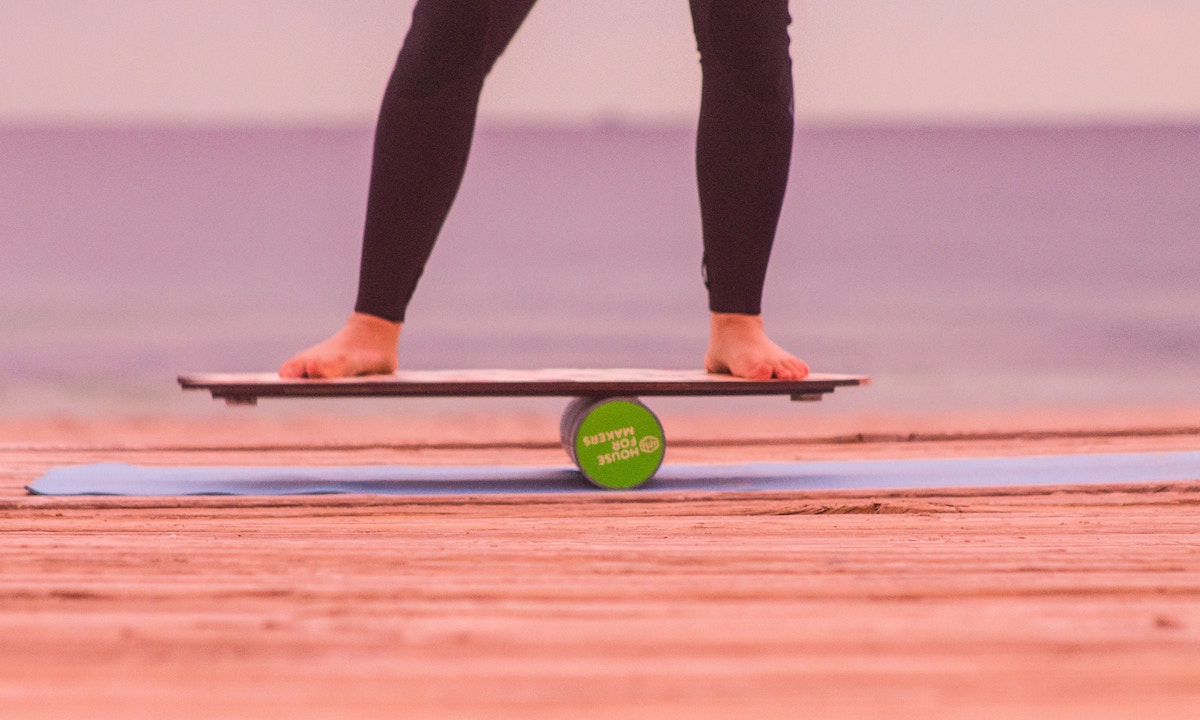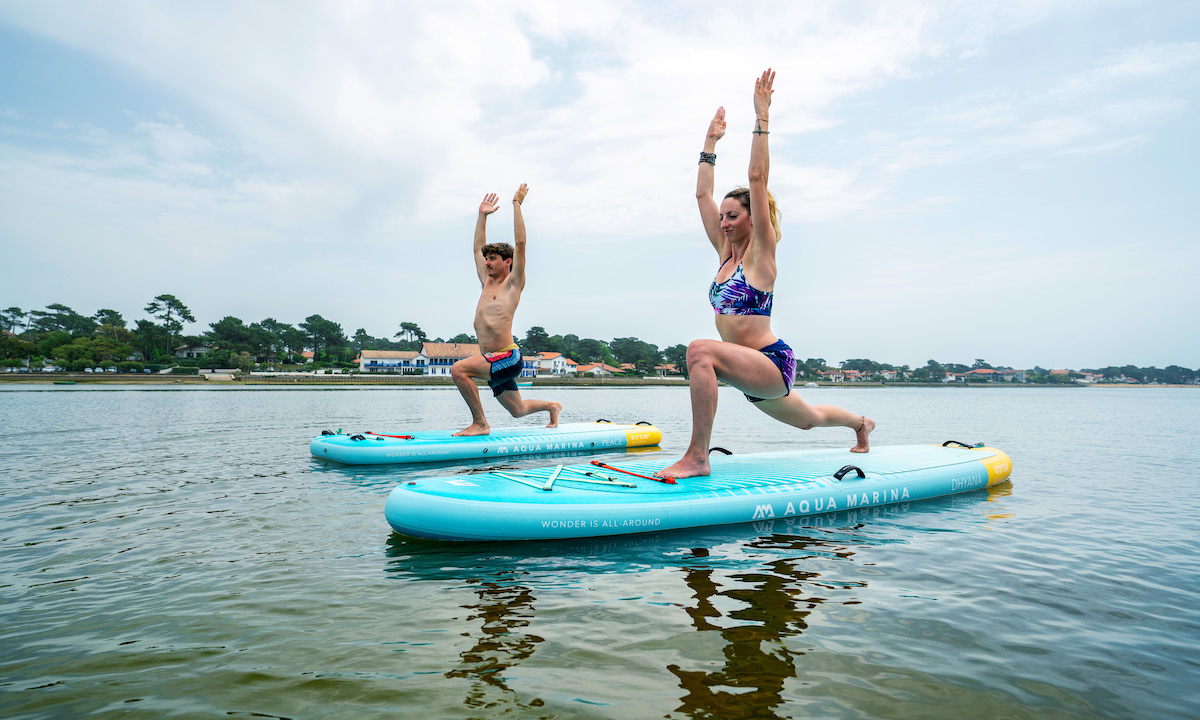Enhancing Your Balance for Paddleboard Success
- Written by Emma Bukowski
- Published in Opinion
- Comments::DISQUS_COMMENTS
My first attempt at paddle boarding remains a memorable one for me. As a seasoned surfer, I assumed my honed balance skills would effortlessly transition to this new venture. Perhaps it was due to the difference in stability on water a SUP board provides or maybe it was because I was paddling with my friend perched on the nose, but the amount of times I fell into the water was a stark reminder that we can always improve even our most practiced skills.
Once I found my feet though I thoroughly enjoyed the transition to stand up paddling. From serene cruises to adventurous wave carving, SUP offers a style for everyone, all centered around a crucial discipline - balance.
Balance extends its benefits far beyond paddleboarding, significantly impacting our daily lives for the better, especially in today's era of desk jobs and poor posture. Improving our range of movement and flexibility interlaces with our ability to balance. A well honed sense of balance helps prevent injury by improving our reaction time to trips and making us less likely to lose our balance on uneven terrain, and improving our judgment when navigating challenging ground on a steep hike for example. So here are my go to practices for boosting balance whilst on solid ground.
Your Apparatus Allies
These two pieces of equipment are your go to’s for balance improvement. Every gym worth its salt should have some variation of each of these, making them very accessible.
Bosu Ball
The Bosu ball, with its versatile applications and balance challenges, should already be on your radar as the perfect tool for land-based balance training. This seemingly playful piece of equipment replicates the uneven surface of water, making it an ideal training method.
The first exercise is relatively simple - standing on the ball and finding your balance. It can take some practice to hold a stable position. Once you find your center, you can begin shifting your weight in different directions and working on quickly rebalancing yourself. Once you are comfortable with the movement and motion of the Bosu ball, it’s time to move on to more challenging exercises such as squats. Bosu ball squats are best performed with your legs roughly shoulder width apart. Once you are comfortably in position, perform a traditional squat, taking care to use correct form to avoid injury. For a more advanced version of this, incorporating weights and eventually your paddle will help engage your arms and core further building on your ability to make micro-adjustments.
Once you’ve got your squats down, the most targeted exercise you can do on your Bosu Ball is paddling. Whilst balancing on your Bosu ball, use your paddle to practice the same movements you would make on your board. For added difficulty, you can try adding resistance by using a resistance band with one end tied to an anchor point and the other to your paddle just above the blade. This resistance can better simulate the resistance of the water as to hone your paddling skills whilst fine tuning your balance on land.
 Photo courtesy: Gustavo Torres Unsplash
Photo courtesy: Gustavo Torres Unsplash
Balance board
Originally designed for surfers to practice indoors, the balance board serves as an excellent companion for paddleboard balance training too. The beauty of this equipment is in its versatility, not only can you use it to work on your standing balance, but also to build arm strength by using it to practice push ups. Its changeable center of balance emulates the feel of the waves and builds your ability to correct yourself when unbalanced.
Similarly to the Bosu Ball, start by finding your balance on this equipment before attempting anything more challenging. I recommend practicing this one in an outdoor space or area with plenty of room as it can be tough to master at first. Once you’ve found your center, practice controlling the board by shifting your weight back and forth. By making these movements you are emulating the changeable surface of water and honing your balance correction abilities
Complimentary Sports
There are numerous other sporting activities that compliment paddleboarding well by enhancing your stability. Incorporating these into your land work, will allow you to reap the benefits on your board.
 Photo courtesy: Aqua Marina
Photo courtesy: Aqua Marina
Yoga
Yoga has significantly enhanced my range of motion and flexibility, making a noticeable difference in my paddleboarding performance. The increased body awareness I have gained as I move through vinyasa flows has transferred across to my ability to move gracefully on my board. Yoga’s emphasis on mindfulness and controlled breathing helps you stay centered whilst tackling more challenging days on the water.
Yoga effectively strengthens and stretches muscles essential for balance, incorporating both static (the ability to stand steadily in one position) and dynamic balance (the capacity to anticipate and react to changes while in motion).
For seasoned SUP enthusiasts, experimenting with yoga poses on your board is a natural progression. Focus on proper foot positioning, smooth transitions, and most importantly, practice on stable ground first. Start with foundational poses such as mountain pose, tree pose, chair pose, high lunge, and warrior I, gradually progressing to more advanced postures. Building balance through yoga is a gradual process, and it requires consistency. I'm still working toward mastering my headstand, a pose which has eluded me for too long but that I'm determined to master.
Pilates
Pilates draws numerous parallels with yoga, yet it distinguishes itself through a central focus of building core strength and endurance. In Pilates, the integration of weights and resistance intensifies workouts, resulting in an exercise that leaves your abs aching the next day (in the best way possible). Enhancing core strength through Pilates, fosters improvement in overall posture and stability. I noticed a marked difference not only in my core, but in my arms as well. By building endurance through Pilates controlled balances, I can paddle for longer without my arms tiring early into a session.
 Photo courtesy: POP Paddleboards / Drew Martin
Photo courtesy: POP Paddleboards / Drew Martin
Mind Over Matter
Meditation
Incorporating meditation into your daily routine is a game-changer for paddleboarding. Approaching your SUP sessions with a calm mindset enables you to dial in and focus when you’re on your board.
In today’s busy lives of work, coffee dates and family events, finding moments to simply "be" in your body without distractions can give us a sense of calm and reconnection. Meditation offers a pathway to inner calm, peace and balance, which not only aids us in regulating our emotional well-being but also contributes to our overall health. By refocusing my attention to the present moment, I’m able to deal with life stresses much easier than the time in my life when I didn't meditate. You don’t need to dedicate a huge amount of time to this practice either, a short session a day is enough to reap the benefits. I swear by a quick 10 minute meditation every morning. It helps me reconnect with myself and focus for the day, allows me to be present in my body and present in the moment. You’ll see bigger improvements than just in your Paddle practice with this one.
Having great balance is a cornerstone to a successful paddle boarder, but improving balance is a continuous journey. With dedication to these practices, you’ll find yourself not only more steady on your board but also achieving balance in your life beyond the water’s edge.

Emma Bukowski
Emma Bukowski is the founder of Noserider Surf Club. She designs functional and stylish surf suits that allow female surfers of all levels and sizes to feel beautiful and confident in the water.
Website: https://noseridersurf.com/
